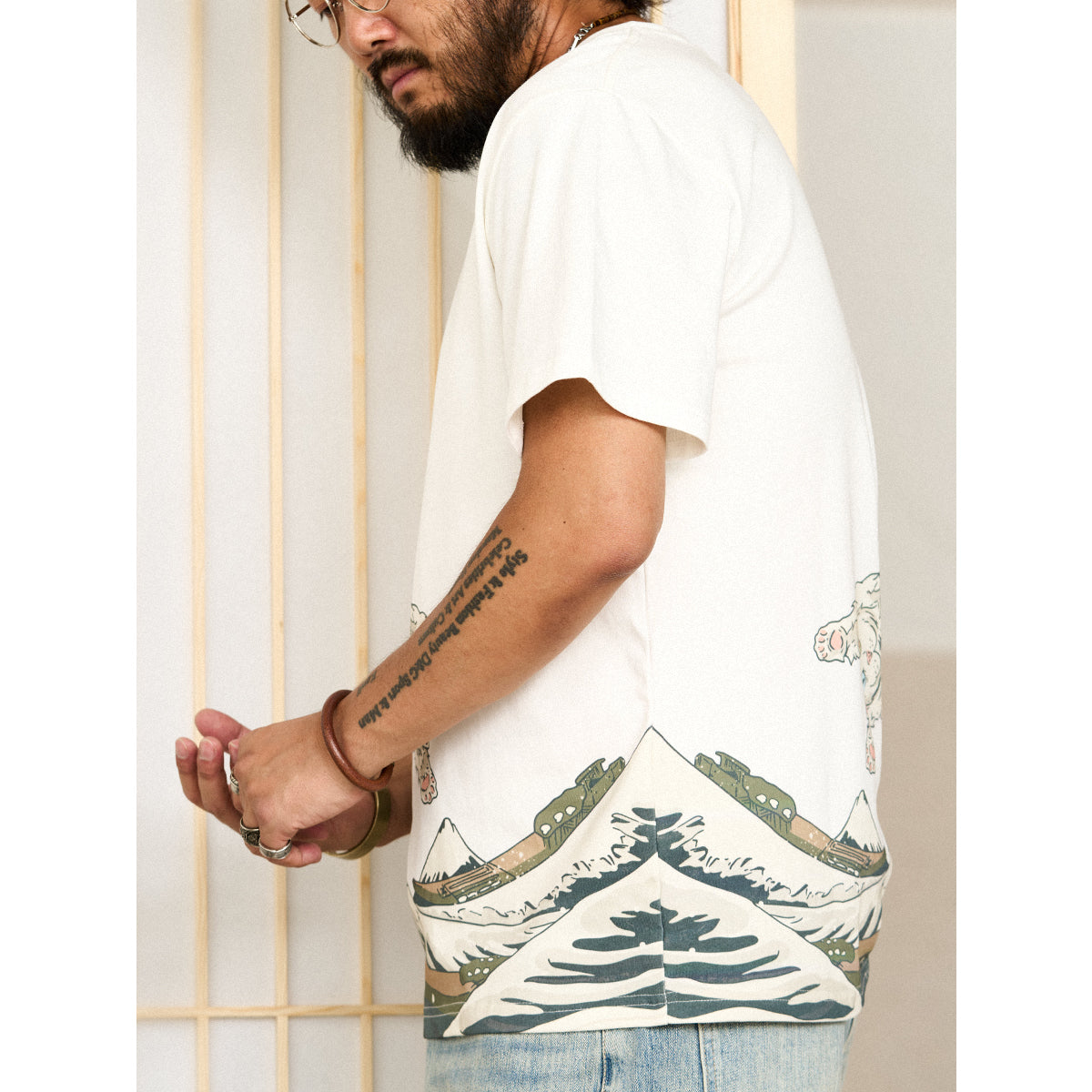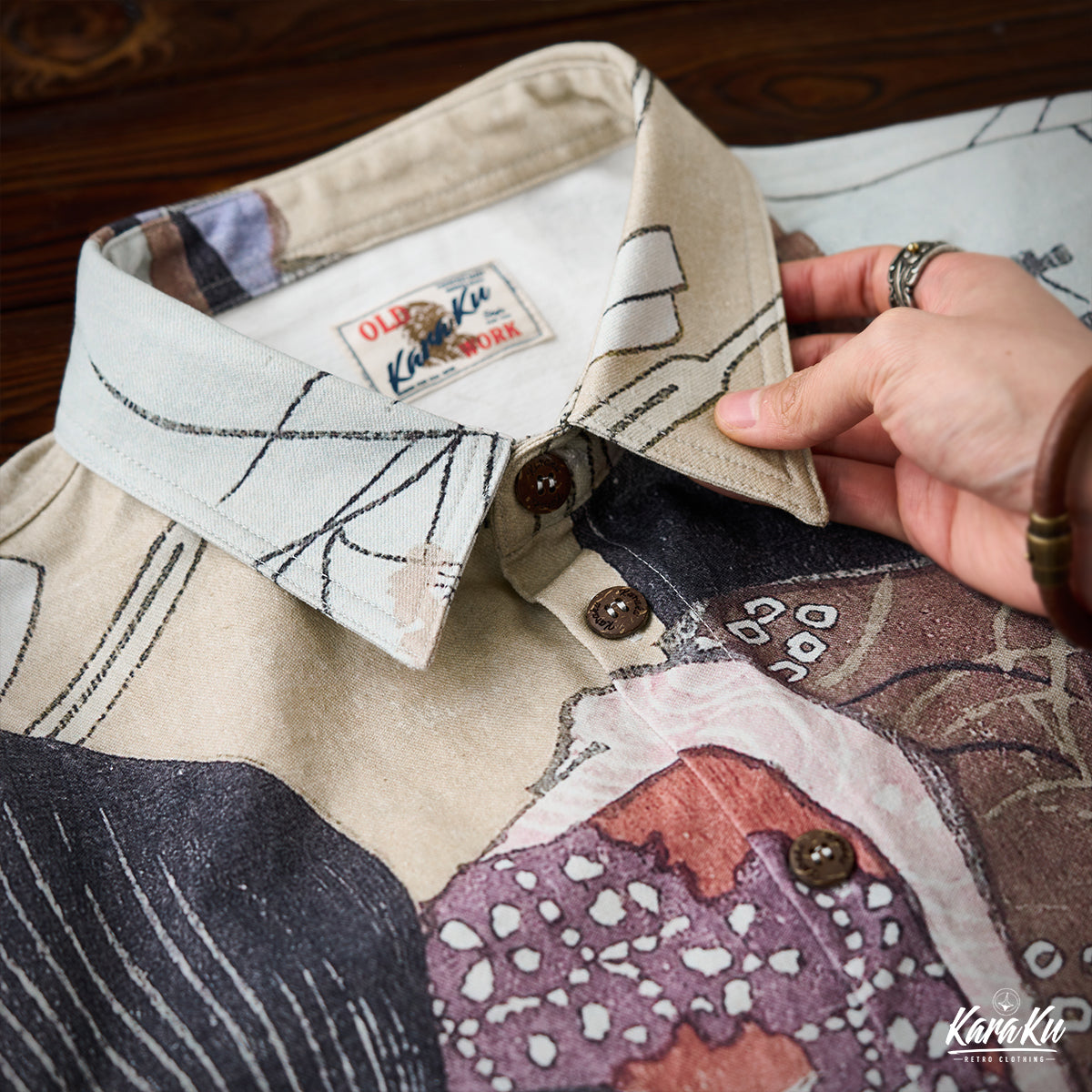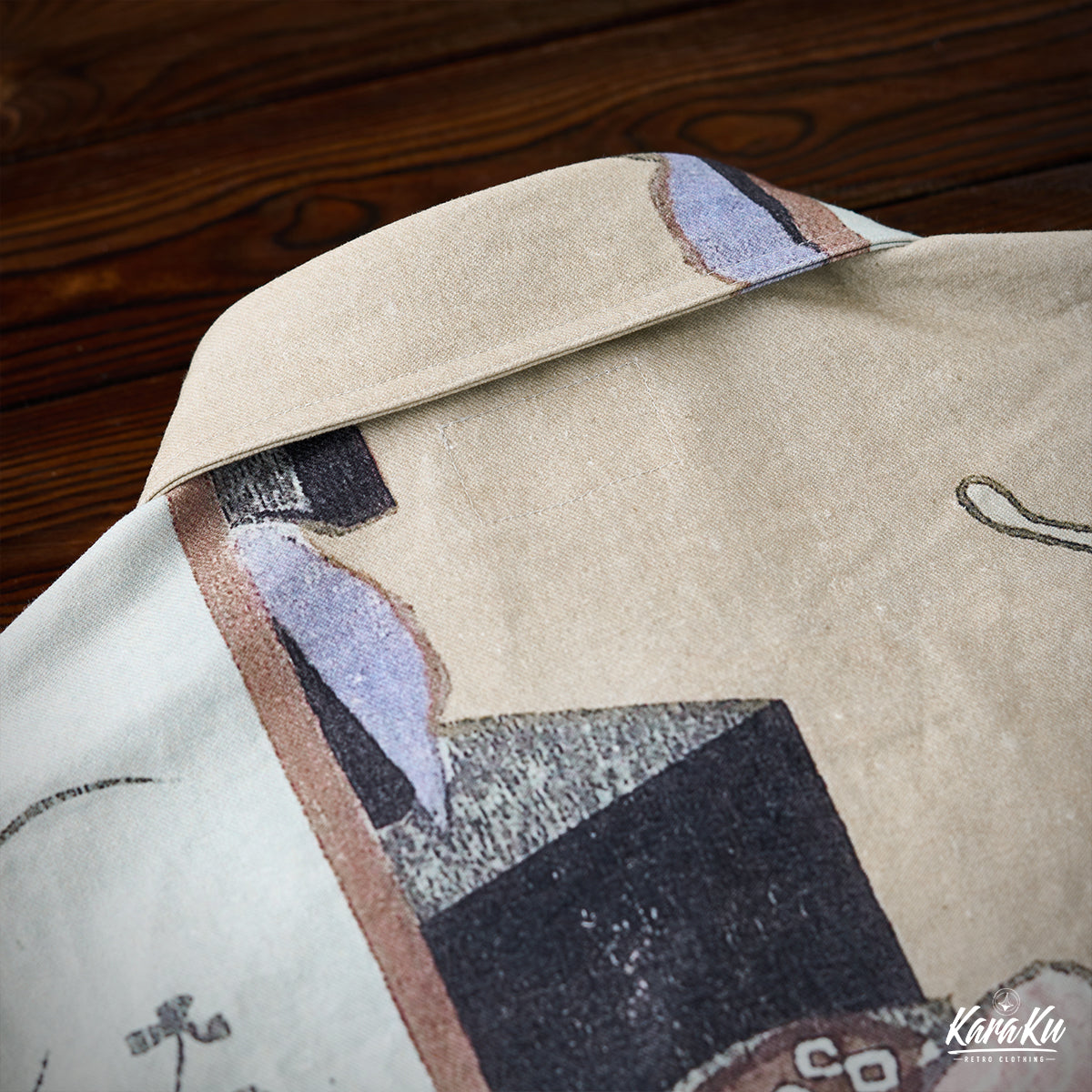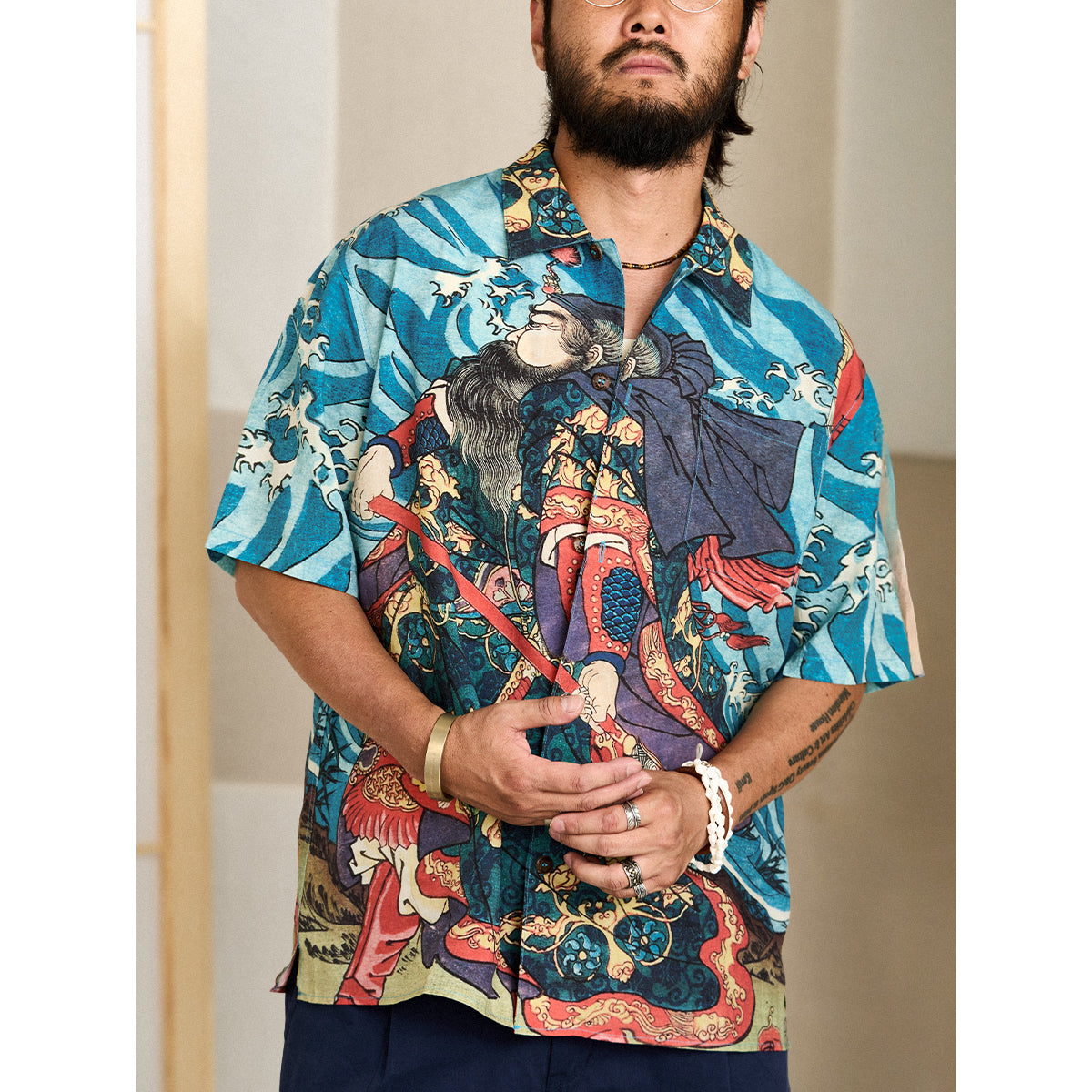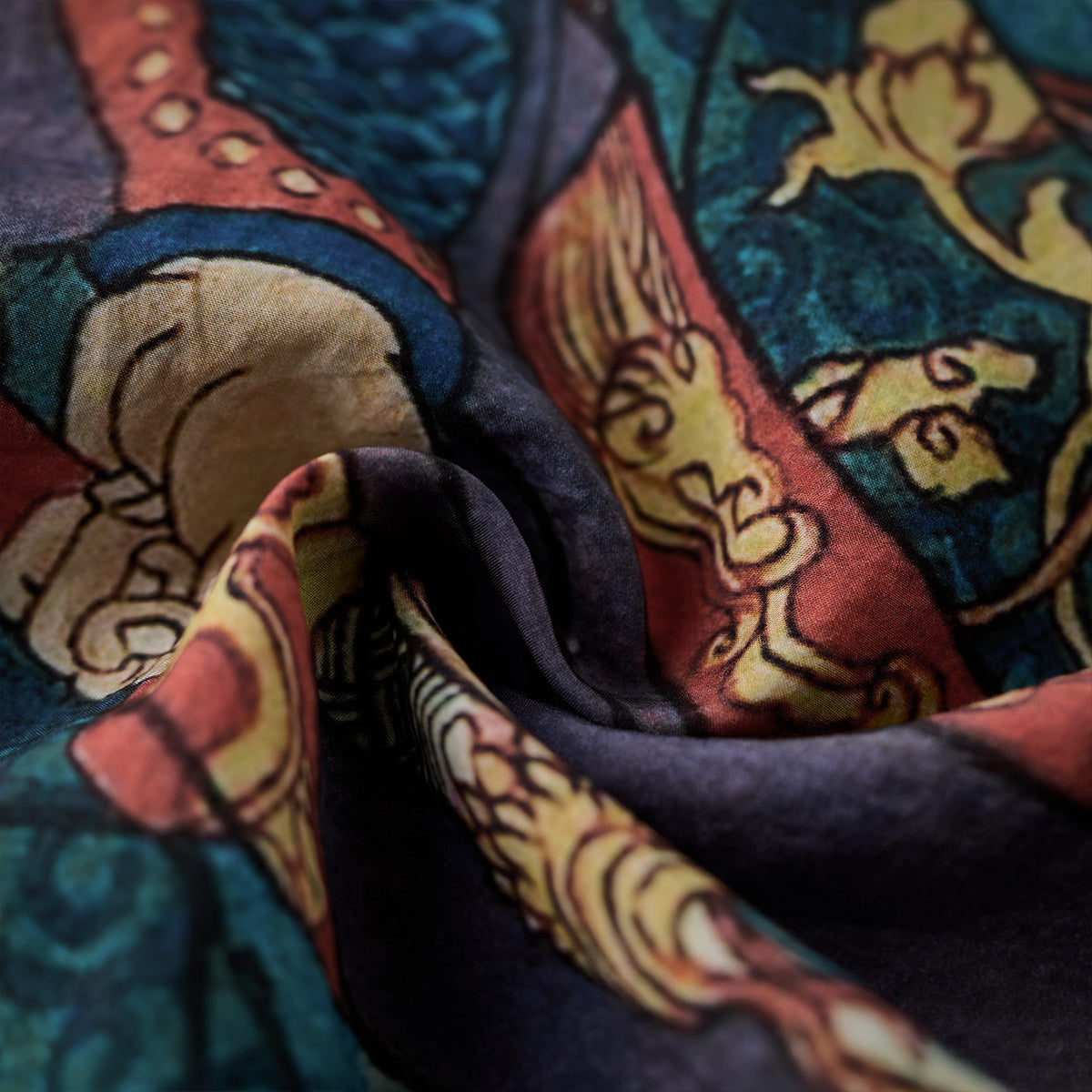Arimatsu Shibori, born in Tokaido, was the top fashion of the Edo period.

Arimatsu-Narumi Shibori is a tie-dyed fabric produced mainly in the Arimatsu-Narumi region of Midori Ward, Nagoya City, Aichi Prefecture. Since its birth in the Edo period, it has produced most of the shibori products in Japan, and was designated as a national traditional craft on September 4, 1975 (Showa 50). It is sometimes called 'Arimatsu shibori' or 'Narumi shibori'.

A typical example is cotton cloth dyed with indigo, and the pattern changes depending on how the threads are tied. From the technique, it is also called "kukuri dyeing". A traditional craft from the Arimatsu and Narumi regions of Aichi Prefecture, where almost all processes are done by hand, it takes a lot of time and effort. During the Edo period, it was protected by the Owari domain as a special product of the domain, so it was actively produced. There are more than 100 types of colorful patterns created by various thread tying techniques and combinations of techniques at its peak, and there are 70 types known in the 21st century alone, the richest in the world in terms of variety. It is considered to be unparalleled in other tie-dye production areas. It is certified as a “designated traditional craft item” under the Act on the Promotion of the Traditional Craft Industry, and even outside of Japan, “SHIBORI” indicates Arimatsu. It is a rare example of a traditional craft that has been continuously developed and improved with many techniques. In the Edo period, it was popular as a souvenir for travelers traveling along the Tokaido, and it was known as the best specialty product of the highway. there is 
Even though it is a traditional craft, it is the modern people who pick up Arimatsu Shibori. Arimatsu Shibori is evolving into various forms now. In the past, hand towels and yukata were the main products of Arimatsu Shibori, but recently, new challenges such as launching a designer's fashion brand using Arimatsu Shibori and holding workshops where you can experience Shibori are being made. . In addition to the traditional indigo color, various new efforts are being made as a traditional craft that lives in modern times, such as making products with colorful colors such as red and yellow.
















